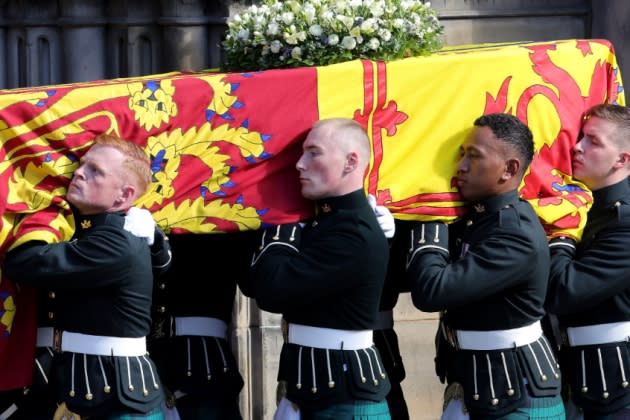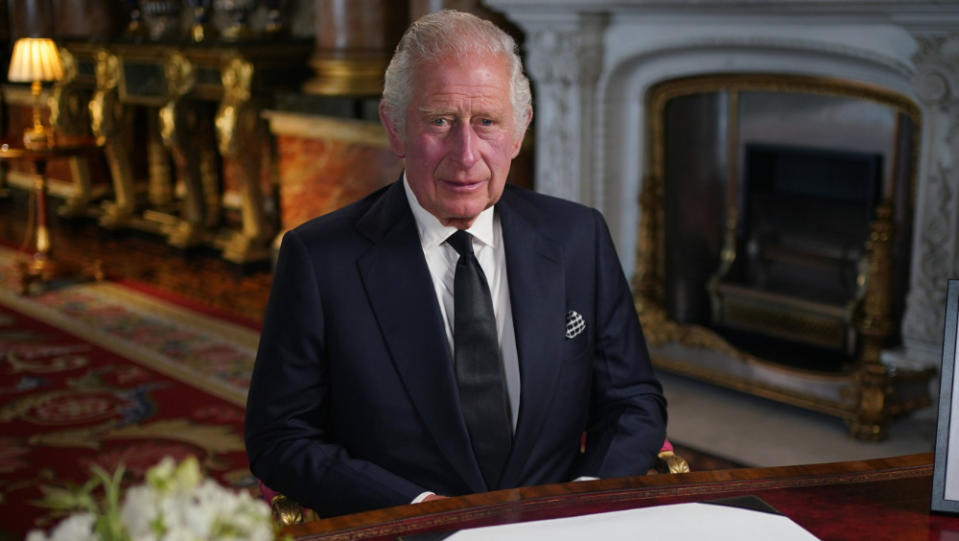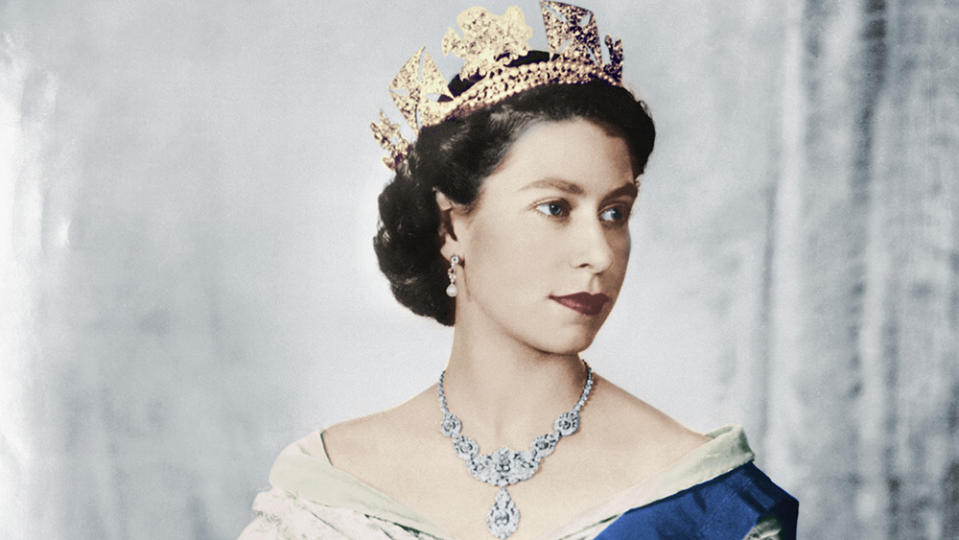Queen’s Funeral Ignites TV Coverage Battle: Inside the Scramble for $60,000 Hotel Suites and More
- Oops!Something went wrong.Please try again later.
- Oops!Something went wrong.Please try again later.
- Oops!Something went wrong.Please try again later.
- Oops!Something went wrong.Please try again later.

Last Thursday evening (Sept. 8), “Operation London Bridge” – the codename for the British government’s longstanding arrangements surrounding Queen Elizabeth II’s death – swung into motion as the U.K.’s longest-serving monarch, who recently celebrated a record-breaking 70 years on the throne, drew her last breaths at Balmoral Castle in the Scottish Highlands.
For global news outlets, this was also a moment many had spent decades preparing for. “I’ve literally been thinking about this for many, many years,” said ABC News’ senior executive producer for special events, Marc Burstein. Similarly Chris Shaw, editorial director at U.K. news producer ITN (which makes news programs for ITV, Channel 4 and Channel 5), told Variety that over 35 years he has rehearsed the Queen’s death “several times each decade.”
More from Variety
BBC to Livestream Queen Elizabeth II Lying-in-State at Westminster Until Funeral
U.K. Cinemas to Close or Screen Queen Elizabeth II's Funeral for Free on Sept. 19
At 12.30pm local time last Thursday, Buckingham Palace gave the first hint that all was not well when they released a statement saying the Queen’s doctors were “concerned for Her Majesty’s health.” The Queen was 96 years old but the statement was still unexpected: just two days earlier she had been photographed at Balmoral welcoming the U.K.’s newest Prime Minister, Liz Truss.
It became clear the situation was serious as it emerged the Queen’s children – Prince Charles, Princess Anne, Prince Andrew and Prince Edward – and her grandchildren Prince William and Prince Harry, were racing to Scotland to be by her side. Shirit Kedar, a London-based correspondent for Israeli media company Ynet News, said her editors in Rishon LeZion, just outside Tel Aviv, “knew immediately” this was a big story. “They were calling me [repeatedly] so we were keeping tabs to the minute.”

In the U.K., BBC One, ITV and Sky News, similarly sensing urgency, scrapped their afternoon schedules in favor of hours of rolling reporting with correspondents stationed outside Balmoral, Windsor Castle and Buckingham Palace. Behind the scenes, ITN swiftly cancelled the technology team’s travel to a conference in Amsterdam. “At that time we were already increasing crewing, deploying location resources, and putting our plans into action,” said Jon Roberts, ITN’s director of technology.
At the BBC’s central London headquarters, lead evening news presenter Huw Edwards, pre-emptively dressed in a sombre black suit and tie, was drafted in early to anchor the coverage as the entire country waited on tenterhooks for news. Finally, at 6.30pm, an update came. In the U.K. alone, over 33 million people tuned in as regular programming (including an episode of British soap opera “Hollyoaks” on Channel 4) was interrupted to inform viewers the Queen had died.
Across the world broadcasters began hastily rescheduling long-planned programming, including both ABC and CNN who both diverted primetime slots to the news, France’s leading commercial TV channel TF1, Italian public broadcaster RAI, Noida-based news network India Today and Germany’s SAT.1, which reported live from London with a special two-hour broadcast. “We don’t know when we’ll revert to our usual programming,” said Aline Pivot, head of news at French broadcaster TF1, adding that more special programming will be slotted in during the next two weeks.
Even as U.S. correspondents were being dispatched to London – including CBS News’ Norah O’Donnell, NBC News’ Savannah Guthrie and ABC’s Robin Roberts – the royal developments kept coming. On Friday, King Charles III made his first public appearance outside Buckingham Palace to meet his subjects before taking a meeting with the Prime Minister and recording his first address to the nation. The king’s speech, in which Charles III promised to serve his subjects with “loyalty, respect and love,” was broadcast at 6 p.m. local time and aired around the world (“We’ll cut live to that,” India Today consulting editor Rajdeep Sardesai told Variety before the broadcast).

The following morning Charles III was officially sworn in as king by the Accession Council (made up of senior politicians, judges, clergymen and Commonwealth leaders) at St James’s Palace, an event which was witnessed by the public for the first time in history. Despite the time difference (the ceremony started at 5 a.m. EST), U.S. networks broadcast the ceremony live, with Savannah Guthrie anchoring an early morning special of the “Today Show.” Allowing the cameras in was, historian Vernon Bogdanor said, “a sign of the times that the monarchy has to adapt to a more open and less deferential society.” Queen Elizabeth II’s accession ceremony, in 1952, was not televised although, after much debate, the BBC broadcast her coronation the following year (King Charles’ coronation is also likely to take place next year).
Later that day, Prince William, his wife Catherine, the Princess of Wales, brother Prince Harry and sister-in-law Meghan, the Duchess of Sussex put on a rare united front as they walked to the front of the Windsor Castle gates to speak to the many hundreds of well-wishers gathered outside. 400 miles north, Princess Anne, Prince Andrew, Prince Edward, their spouses and children, did the same outside Balmoral. And the date was finally confirmed for the Queen’s funeral, which is set to take place on Monday (Sept. 19).
For broadcasters, producing hours of live coverage, across multiple parts of the U.K., was no mean feat. “Our task was to be ready at any moment to instantly increase our broadcast output tenfold while simultaneously triggering the building of a series of special event productions,” said ITN’s Job Roberts. “That doesn’t just mean arranging outside broadcast trucks and hundreds of cameras, but also miles of cabling, structures, studios, security and more.”
On Sunday, the Queen’s coffin was seen in public for the first time, as her body was moved from Balmoral to Edinburgh in a six-hour trip during which thousands of people lined the streets to pay tribute. Broadcasters including BBC One, which also has yet to return to normal scheduling, dedicated more than five hours of live coverage to the Queen’s cortege. There were more live broadcasts on Monday and Tuesday as the Queen was moved again, first from Edinburgh’s Palace of Holyroodhouse to a nearby cathedral, where a service to celebrate the Queen’s life took place, and then from Edinburgh to London. In London, she was taken first to Buckingham Palace followed by Westminster Hall, where she will now lie in state until her funeral on Monday, with millions expected to pay their respects.
It is the funeral – which will see world leaders including President Biden in attendance – that is now the focus of broadcasters worldwide. “It’s going to be a monumental occasion,” Esme Wren, editor at U.K. public broadcaster Channel 4 News, told Variety. “The sheer number of members of the public who will be coming into London, and attending other events around the U.K., to pay their respects, plus the volume of foreign dignitaries who will be coming to the capital, means it will be a unique and historical event.”
Ynet’s Shirit Kedar was more blunt. “I think it’s going to be mayhem,” she said of the scenes that will likely take place on Monday. Kedar also predicts broadcasters without a studio may have difficulty sending and receiving signal. “There’s going to be a huge, huge problem with reception because there’s going to be so many broadcasters from all over the world.”
For ITN alone, Jon Roberts says, there will be “multiple trucks, camera rigs, crew in the field and in GIR, an operations centre at key locations such as Canada Gate and Hyde Park, and a pre-built studio with lighting and furniture in Windsor.” Sky News, meanwhile, will have anchors stationed at Windsor Castle and Westminster Abbey as well as roving reporters speaking to the crowd.
ABC News, led by David Muir and Robin Roberts, will broadcast along the route of the procession to Windsor Castle, where the Queen will be interred, as well as from outside Buckingham Palace and opposite Westminster Abbey. It will be a monumental undertaking. Said Burstein: “The only other time I have something [this elaborately staged] is when I produce the U.S. inaugurations of the next President.”
For networks who haven’t had the foresight to snap up a location so far ahead, it will now be an almost impossible task. A source said that venues are charging extortionate prices, with one Westminster hotel demanding up to £50,000 ($60,000) for use of a suite overlooking central London. Kedar said she has been fielding calls from major Israeli broadcasters asking for her help with finding a space from which to broadcast from.
Burstein says ABC’s spot in Westminster, on the roof of the Methodist Central Hall, is the one the network first used 25 years ago for Diana’s funeral and again in 2011 for William and Catherine’s wedding. Although Burstein declined to discuss ABC’s financial arrangements with the Hall, he said of the space: “We’ve had this locked up for a long time.”
The reasoning is simple. “It’s a significant moment in world history,” Burstein said. “[The Queen’s] passing and the subsequent events that are being held to commemorate her life and her reign are extremely important to our viewers. We intend to devote comprehensive coverage to that.”
Elsa Keslassy, Naman Ramachandran, Leo Barraclough and Nick Vivarelli contributed to this report.
Best of Variety
'The Sopranos' Gets the Funko Pop Treatment in New Collectibles Release
From 'The Sandman' to 'Blonde': Books Made Into Movies and TV Series That You Should Read
Jennette McCurdy's Provocative Book 'I'm Glad My Mom Died' Is Already a No. 1 Bestseller
Sign up for Variety’s Newsletter. For the latest news, follow us on Facebook, Twitter, and Instagram.

